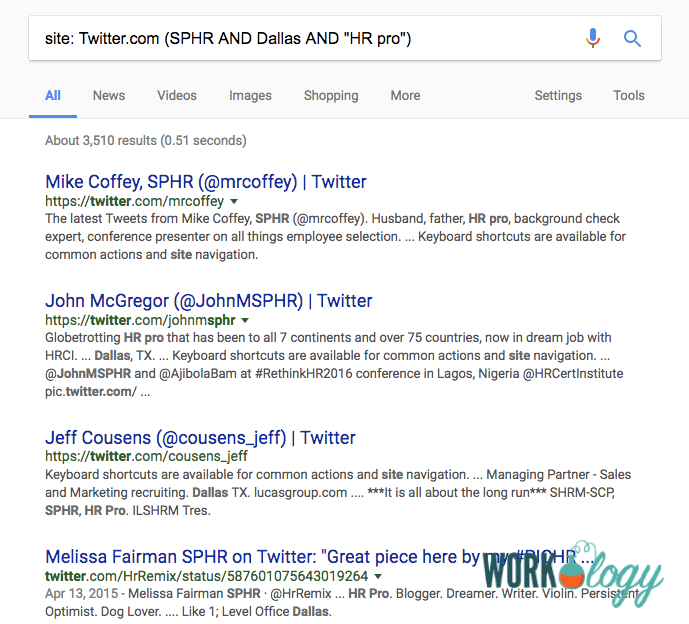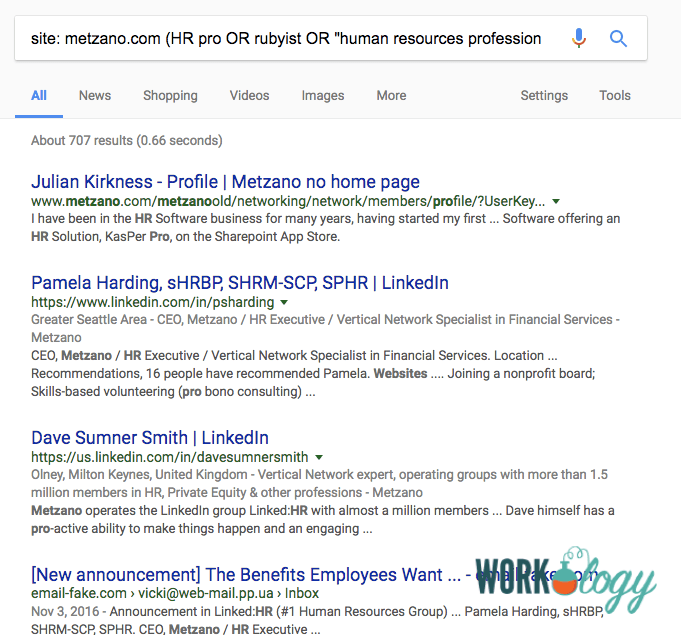One of the most effective ways to source for talent online is using what is called Boolean search. Boolean allows you to combine words and phrases using the words AND, OR, NOT (known as Boolean operators) to limit, broaden, or define your search. It is an effective way of sourcing and searching for very specific skills, traits and qualifications of candidates you want to find on the Internet.
The Internet is the noisy and extremely complex. The sheer amount of information makes it hard to locate qualified candidates among the trillions or quadrillions of online profiles, communities and social networks. The internet is effectively the world’s largest haystack and your candidate is the needle you are seeking.
Boolean search has been an internet sourcing and recruiting staple for years, as recruiters search for databases, member lists and candidate profiles. Even before that boolean search was used by librarians who were searching the web for credible information, resources and articles to support thesis statements and your college term papers.
What is a Google X-Ray?
A search engine X-ray whether Google or Bing effectively allows you to search web pages for specific keyword combinations and information. A Google X-Ray is the most basic of Boolean logic. By using Boolean, you can target your results without having to comb through thousands of pages of search results. It is an effective way to source for candidates who have specialized skills and keywords listed on social networks, websites and online databases.
Step 1: Select a Search Engine You Wish to X-Ray
Using a search engine such as Google, you X-ray the site using the “site:” command.
site: metzano.com (HR pro OR “human resources professional”)
For the purposes of this example, we will be looking for results in a popular new HR and recruiting forum called Metzano.com. This command works with most sites where you can access information that is NOT behind a password protected network such as Facebook and LinkedIn. Facebook and LinkedIn are not always search engine X-ray friendly.
You can see from my string that I searched for not just common HR job titles (click here for examples) but words that my candidate target might include in their profiles. The “OR” in this signifies to the search engine that you are looking for a number of different words in the profile. If you choose to use “AND” it would tell the search engine you need these words in combination. The longer and more defined your Boolean string, the shorter and more refined your search engine result lists will be.
Step 2: Setting Up Your Basic Boolean String
Type the “site:” command followed by the url of the website you are wishing to search. Omit the “www.” and the “http(s)”.
One of the things that make Boolean great is that it can search for most any site. For example, if you are looking for programming talent or someone with ruby on rails experience, you don’t have to rely on sourcing technology or resume databases. You can search for sites like Meetup.com, Quora, and Github for prospective candidates’ profiles. The challenge though, is that these candidates aren’t necessarily interested in your opportunity, meaning that you will spend some time tracking down their phone number or email to get in contact with them, uncertain if they are actively interested in the position you are hiring for.
Step 3: Add Keywords and/or Location
Next, add your keywords and a location if you wish to be specific in your search. It is best to make your search as broad as possible and over time narrow your search strings.
As I mentioned earlier, the more parameters you set, the more specific are the search results that come back. If you are looking for candidates in a certain city or nearby metro area to a location, you can search for those very specific profiles.
Step 4: Further Narrow Your Results
To further narrow down your search use those keywords we talked about earlier. For a tech position, you would include “RoR” or “ruby” or “rails” or “Rubyist.” For HR you might include certifications like SPHR, PHR or SHRM-CP.
The key when it comes to Boolean search is finding url patterns that will help establish profiles. This is extremely helpful in X-raying sites and locating the contact data of qualified candidates on membership communities. For creatives my current favorites are Ello and CreativePool.com You can set up a Google X-ray on Indeed sourcing for profiles and your requirements too. On a basic level, this is what sourcing technologies like Entelo, SwoopTalent, TalentBit and others do. However, they are sourcing and crawling information on multiple social sites collecting and displaying that data for you on a nice and easy to use dashboard without having to use Boolean logic.












9 Comments
Great article and really, really useful info to boot.
Despite providing a wealth of useful info and being incredibly easy, it still amazes me how few people use boolean operators to narrow down their searches! We’ve used them for a while and have saved so much time sifting through search results!
One can also generate X-ray search requests with a help of SignalHire software. All you have to do is to set filters (location, company, job title, skills, keywords etc.) and choose web source (GitHub, Facebook, LinkedIn, Twitter). The system will generate X-ray search request for you in a couple of seconds.
I completely agree with you on that. I ended up making a placement for a Director of Automation & stimulation engenieering using the above mentioned method.
Hi Nikki wilson,
Good morning
Could you please explain how to find in GitHub.
A lot of thanks for explain X-Ray search very helpful information.
Thanks for explaining X Ray search with examples. Very helpful.
ThankS for this post. This made my day,will explore it tod itself.
Thanks for sharing . It is very helpful for me and also informative for all those users who will come to read.
just do the same but put “site:github.com” instead
Comments are closed.